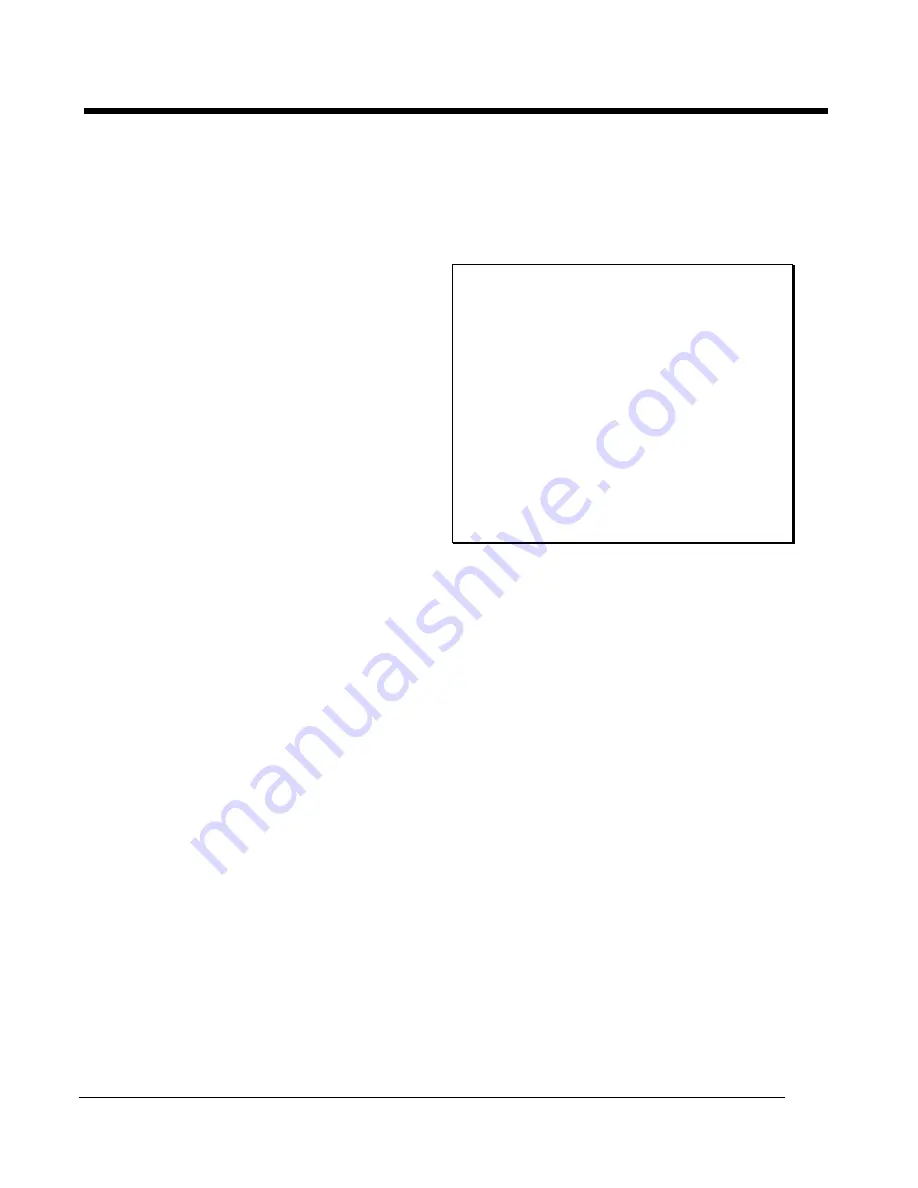
SBIG
S
ANTA
B
ARBARA
I
NSTRUMENT
G
ROUP
Page 20
SBIG ST-4/0490
capturing an image and saved with the image on
disk.
The path parameter tells the computer which
directory to look in for files used in the
Image I/O
command. The path should be blank (or set to
".\") to load and save files to the default directory
(the one you were in when you ran the CCD
program). Typically you will have a computer
with a hard disk, or one with just floppy drives,
and should follow the directions in the next two
paragraphs:
If you have a hard disk
You will probably have the CCD program in
a directory called CCD. You could save your
files in another directory called DATA (that
you had previously created) by using a path
definition of C:\DATA\. You could save the
files to a floppy disk drive by using a path of
A:. Floppy disk drive operations are slower
than hard disks, so it is best to save to the
hard disk, and later save the valuable files to
a removable floppy.
If you do not have a hard disk
First load the CCD program into memory
from the A: drive, then remove the CCD
source disk and insert a formatted blank disk
for data storage. Use a path of A: or B:,
whichever is appropriate. If you have two
disk drives you can keep the source disk in A:
and store the data in B:. Remember to
reinsert the source disk into the A: drive
before exiting the program (if you only have
one drive) so that the configuration data can
be saved upon exiting.
You can also set a filter in the
Image I/O
command. A filter tells the computer to only
look for files with a certain name or extension. A
filter entry might be *.PIC or *.ST4, where the
asterisk is a wild card character. You can any
any filter that is valid for MS-DOS, just like with
most of the MS-DOS commands like copy, erase,
etc.
To load a file with the Image I/O command,
use the cursor to highlight the
Load
operation,
and hit ENTER. You will be presented with
another command screen showing the files in the
specified path matching the filter parameter.
Select the desired file using the cursor keys, and
hit ENTER again. The file will be loaded, the
Status box will show an annotation attached to
the image, and the values of the telescope
parameters associated with the image, and the
Data Buffer information box will be updated to
reflect that fact that an image has been loaded.
After loading an image you would typically use
the
Display
command to display it.
Note
:
The directory command screen shows a
maximum of 40 files. The files are sorted into
alphabetical order, and you can move the
cursor by hitting the starting letter of a file
name. For example, hitting the "T" key
positions the highlighting cursor on the first
file name starting with "T". This same
directory command screen is used when ever
the CCD software asks you to pick a file from
the disk. Since you will not be able to access
any files beyond 40 in each directory, you
should try to keep you images arranged with
a maximum of 40 per directory.
To save a file that has been downloaded from the
camera or has been changed, select the
Save
operation and hit ENTER. You will be asked for
the name of the file, and the file will be saved in
the directory specified by the Path parameter. If
you pick the name of an existing file, the software
will ask you if you wish to overwrite the file
before it actually performs the Save operation.
The
Add image
operation can be used to
co-add an image on disk to the one in memory.
Upon invoking this operation you will be
presented with the same command screen used
in the
Load
operation where you can select the
file you wish to add. After selecting a file you
will be presented with a third command screen
where you can specify an X and Y offset. The X
and Y offsets are the offsets of the image to be
added from the one in memory.
The
Dark subtract
operation can be used to
subtract a dark frame stored on disk from the
light frame currently in memory. A value of four
is added to the light image before the subtraction
is performed to insure that clipping of the image
does not occur due to slight offsets between the
two exposures.
Selecting the
Edit parameters
operation
allows you to change the file annotation, and edit






























